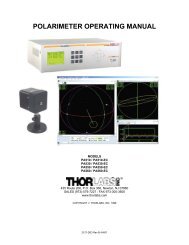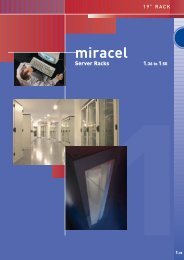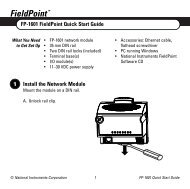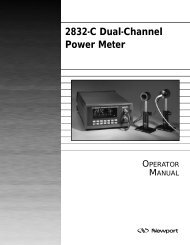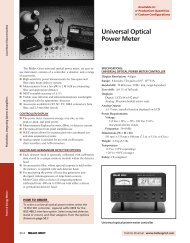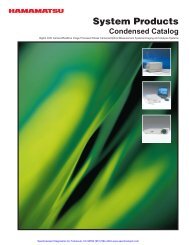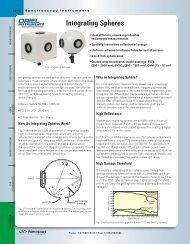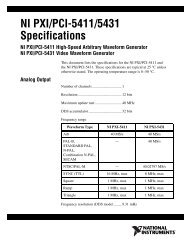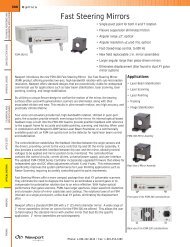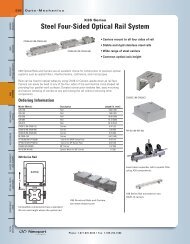Model 1835-C - Newport Corporation
Model 1835-C - Newport Corporation
Model 1835-C - Newport Corporation
You also want an ePaper? Increase the reach of your titles
YUMPU automatically turns print PDFs into web optimized ePapers that Google loves.
NIST traceability requires that detectors be recalibrated on one year intervals.<br />
As individual detector responses change with time, especially in the ultraviolet,<br />
recalibration is necessary to assure confidence in the accuracy of the<br />
measurement. For the most reproducible measurements, the same detector<br />
should always be used for measurements which are to be directly compared.<br />
3.10.2 Quantum Detector Temperature Effects<br />
Semiconductor, <strong>Newport</strong> Low-Power detectors, are affected by temperature.<br />
At long wavelengths, quantum detectors typically lose sensitivity with increasing<br />
temperature. Additionally, detector dark current increases exponentially<br />
with temperature.<br />
Observed dark current is often dominated by the interaction between the<br />
detector and a meter’s amplifier and is typically larger than the theoretical<br />
dark current limit. Silicon detectors are inherently quieter than germanium<br />
detectors due to their higher internal resistance and lower capacitance. The<br />
noise or drift in the dark current sets a lower bound on the measurement<br />
resolution which can be achieved with any given detector. Cooling a detector<br />
significantly lowers its dark current and dark current noise.<br />
The observed dark currents can also be zeroed at any moment via the ZERO<br />
function. Since dark currents drift with temperature, the ZERO should be<br />
adjusted just prior to taking any measurements. If the detector temperature is<br />
constant, sensitivity changes and dark current drifts are significantly reduced.<br />
3.10.3 Thermopile Detector Temperature Effects<br />
Thermopile, <strong>Newport</strong> High-Power detectors, are significantly affected by<br />
temperature fluctuations arising from air flow disturbances. As the detector is<br />
a temperature measuring device, air flow disturbances set a practical lower<br />
limit on the power that a detector can measure. In order to get the most out<br />
of any thermopile detector, be careful to shield the detector from air flow<br />
disturbances. Common sources of disturbance are: air conditioners and<br />
people walking past.<br />
3.10.4 Energy Detector Temperature Effects<br />
Pyroelectric, <strong>Newport</strong> Energy detectors, are AC coupled devices and thus are<br />
not susceptible to temperature induced DC signal offsets or noise floor<br />
changes. One generally does not need to take much precaution with pyroelectric<br />
detectors except to make sure that their damage threshold is not exceeded.<br />
3.10.5 Ambient and Stray Light<br />
Ambient and stray light striking the detector should be considered when<br />
making a measurement. Ambient light can be distinguished from dark current<br />
(or the detector/meter noise floor) by either turning off or blocking the source<br />
and covering the detector face with opaque material such as a piece of black<br />
rubber.<br />
Using the human hand to cover the detector is not advised because it emits a<br />
significant amount of infrared radiation and radiates a temperature significantly<br />
different from ambient. With the detector covered, a reading of the<br />
dark current may be made. Next, remove the material which is covering the<br />
detector and take another reading. The difference is the ambient light level.<br />
35



